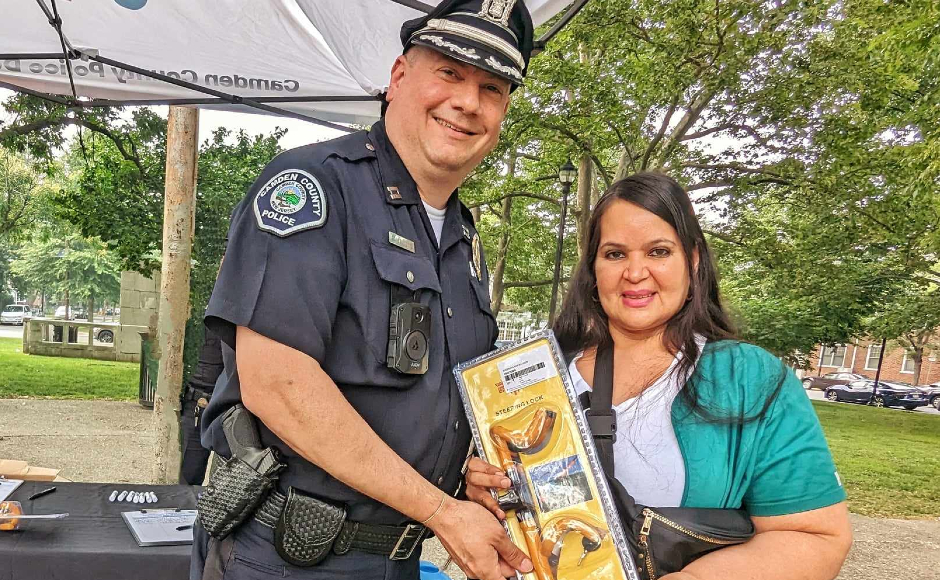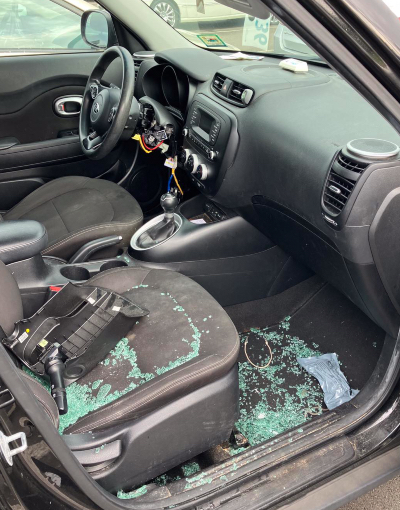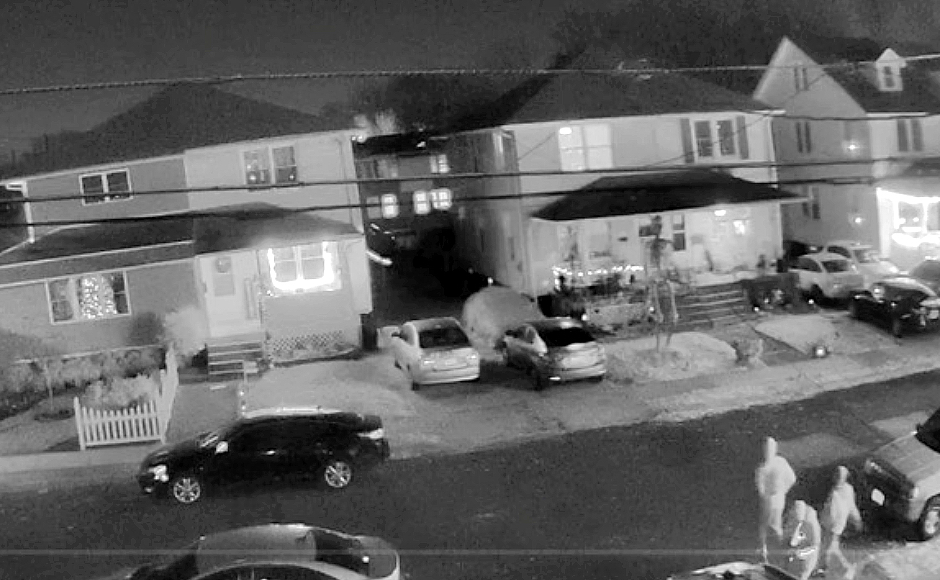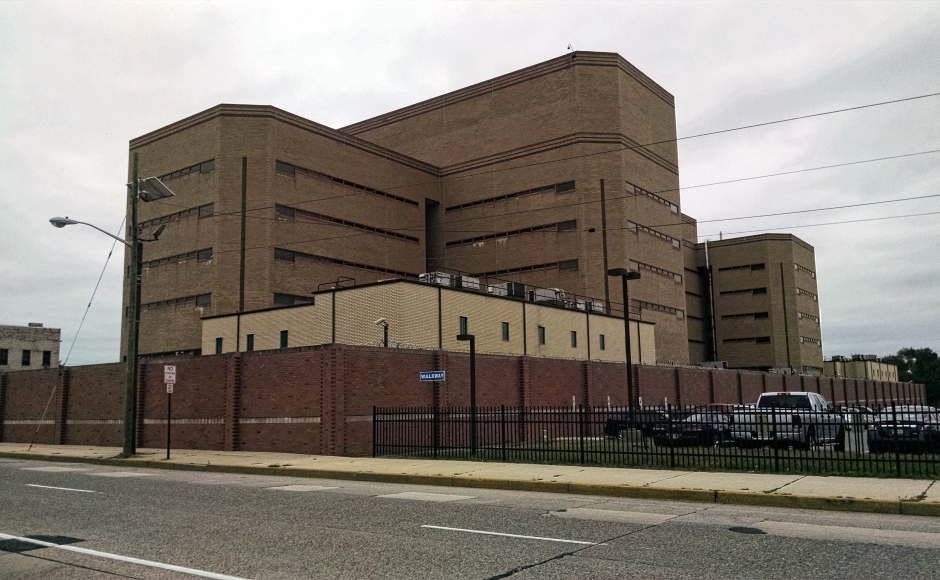Hyundai and Kia thefts, attempted thefts, and burglaries frustrate residents and police alike — especially because most offenders are underage.
By Matt Skoufalos | December 20, 2023
On August 7, Amelia Messec-Collins returned to her Collingswood home to discover her 2016 Kia Soul had been vandalized, possibly in an attempt to steal it.
The front passenger side window of the vehicle had been smashed open, and the steering column ripped apart.
When police arrived, Messec-Collins was told she was the fourth Kia owner to have reported a vehicle burglary that day.
The insurance adjuster said it was the 40th Kia they’d seen vandalized that month.
In only his second week on the job, the tow truck driver said hers was the eighth Kia he’d towed from the scene of a vehicle burglary so far.
In addition to paying her $500 insurance deductible, Messec-Collins didn’t have use of her car for four months, as a swath of Kia burglaries had made replacement parts scarce.
After two-and-a-half months, Messec-Collins said she discovered that her car had sat on a dealer’s lot, exposed to the elements, with only the trash bags that she had taped over the smashed windows to secure it.
“They never sealed it up,” Messec-Collins said. “All the glass was still in the car. Nothing had been fixed. There was not even an ignition to put a key in; just a box of parts in the back seat.”
She towed the Kia to another dealership, and after another 45 days of waiting for parts, finally got it back home December 8. At 8:00 that night, Messec-Collins heard a noise, and saw three figures darting off into the shadows in the direction of the Collingswood PATCO station.
Outside, she discovered that the car’s passenger-side door lock had been drilled out; she believes the people she saw run away from the car attempted the same thing with the driver’s side door handle. Messec-Collins went back inside her home and called police.
About half an hour earlier, Haddon Township resident Nick Mink had made a similar call, after his girlfriend, Megan DeTore McDermott, went out to her Jeep Grand Cherokee Summit to discover her belongings strewn across the lawn.
“I questioned myself,” DeTore McDermott said. “Did I accidentally knock them outside the car? Nope, somebody was in my car.”
Mink logged into his home surveillance system. It had caught video of three men in hooded sweatshirts ransacking the unlocked Jeep.
“Two went into the driver’s door, then they walked away and went down the street to the right,” Mink said. “One went into the back door behind the driver’s side. Then they went into other cars. They emptied everything in two minutes.”
Miraculously, DeTore McDermott reported that, although her vehicle had been tossed, nothing was stolen from it. Haddon Township Police arrived quickly to process the scene for evidence, and later that evening, apprehended a pair of suspects at the Collingswood Speedline station, thanks to calls from Mink, Messec-Collins, and others.
Haddon Township Police Chief Tim Hak said his department received reports of 10 vehicle-related incidents that evening, and charged two Camden City teens in connection with them.
One, a 16-year-old male, faces third-degree burglary charges and third-degree attempted theft charges; fourth-degree criminal mischief charges, and a disorderly persons offense for possession of burglary tools. The other, a 17-year-old male, was charged with receipt of stolen property, which is a disorderly persons offense.
“We do everything in our power to identify and charge anybody that does these types of things, and that’s the best thing we can do outside of educating our residents,” Hak said. “That’s what we’re focused on right now.”
‘We’re doing everything we can to get that car back’
Vehicle thefts, attempted thefts, and burglaries are up across the country, and police report that most suspects in those cases are juveniles. Hyundai and Kia owners are most frequently targeted in those incidents, with repeat victims among them.
“One was stolen twice in one day from Collingswood,” Collingswood Police Chief Kevin Carey reported. “We recovered it in Camden, a tow truck picked it up, moved it two blocks to secure it, and it was stolen again.”
Although law enforcement agencies commonly deal with property crime, vehicle theft is difficult to anticipate, Carey said.
“I only have one year of data right now, and there’s no real timeframe or location for me to really be able to focus in on,” he said. “I don’t think a lot of people understand why we say, ‘Report everything.’ A big part of it is so we can collect that data.”
Haddon Township Police Chief Tim Hak said that law enforcement is committed not just to recovering stolen property, but to processing crime scenes and prosecuting offenders. Investigators gather evidence, following digital and physical trails left by offenders, and work to build cases against them.
“We’re doing everything we can to get that car back,” Hak said. “We take fingerprints, look for receipts to track down the location, review video surveillance. We follow cameras for miles and miles to see if they get out and fill up with gas. We also have access to automatic license place reader (ALPR) systems, so we can see where the vehicle’s been, track timing, and get an idea whether the vehicle is still on the move or occupied.”
Haddon Township detectives often locate stolen vehicles because they are “well versed in the locations in which they are typically found,” Hak said. Collingswood Police have a vehicle recovery rate “darn near 90 percent,” Carey said, “because most of them are just joyriders getting dumped in Camden.”

Camden Metro Police Capt. Jose Gonzalez gives an anti-theft device to city resident Oneida Ortiz. Credit: Matt Skoufalos.
Unfortunately for victims, the losses of their vehicles take a financial, emotional, and practical toll.
The impact of these crimes also has been disproportionately distributed among working-class people who drive entry-level vehicles, and who may not have the means to absorb a big repair bill or insurance claim.
“Before, if you locked your car, typically we would not see theft in Collingswood,” Carey said. “Now we’re seeing windows smashed. There’s time and a lot of money involved. The impact that can have is far greater than just feeling violated.”
“Victims may not have another vehicle,” Hak said. “Most people have deductibles that are $500, or even $1,000; it is a hardship for them.”
Police are likewise frustrated with the prevalence of vehicle thefts, and the feeling that their residents are being targeted simply for the cars they drive.
“For me, it’s very disheartening that a large percentage of people who have these vehicles could be susceptible to crime for nothing more than owning that vehicle,” Carey said. “My job is to provide you with a safe place to live. I want to provide the best service that I can, and this impacts my ability to provide that best service.”
Hak said he hates Hyundai or Kia owners feeling that they must be hyper-vigilant simply because of the make and model of the car that they purchased.
“This is trending right now, and Tiktok and other social media doesn’t help,” he said.
Rehabilitation, education, and accountability
Camden County Prosecutor’s Office (CCPO) First Assistant Prosecutor Timothy Chatten said that authorities take motor vehicle theft “very seriously,” and acknowledged dramatic increases in such crimes across the state since 2020.
Stealing a vehicle is dangerous enough, but stolen vehicles may be used in additional, even more serious crimes, like reckless driving, carjacking, robbery, or eluding law enforcement. Those kinds of crimes aren’t contained within municipal boundaries, Chatten said, and can easily cross state lines into Delaware or Pennsylvania given their proximity to New Jersey.
“It’s a serious quality-of-life issue,” Chatten said. “The burden shouldn’t fall on the community, but we’ve got to do our part.”
Chatten, who spent the majority of his prosecutorial career in juvenile justice, said it’s particularly distressing that the uptick in vehicle crime has been seen prominently among teens.
“These drivers are underage, and unlicensed, and inexperienced, and that car is thousands and thousands of pounds, and dangerous,” he said. “The level of risk that the public’s being put at is incredible. That’s why we’re taking this so seriously and why we have the response that we do.”
Law enforcement approaches to combating juvenile crime focuses on three key elements, Chatten said: prevention, intervention, and stabilization.
Prevention includes things like securing cars, homes, and access to both; using anti-theft deterrents like steering wheel locks, alarms, motion-sensing lights, and cameras. Intervention involves early youth outreach that educates kids on the consequences of decision-making that puts them afoul of the law.
Stabilization refers to the work that is done through social service agencies to reinforce households that might be struggling to care for at-risk children.
Within 24 hours of a referral, county crisis intervention units can intervene with free social services assessments that can help stabilize a household.
Studies of juvenile activity in the county have identified three trends as precursors to crimes: truancy, curfew violations, and running away from home, Chatten said. Authorities began using those indicators as opportunities to intercede in households before bigger problems could arise.
“We go into the schools at the youngest possible age, talking with kids, and trying to build relationships with them so they understand we are there to support them,” Chatten said. “That’s front-end, diversionary work versus back-end incarceration or residential placement — when the kid’s so far into the system that it’s really hard to change things.
“When kids are skipping school or staying out late, we need to get the household more stable; put services in place for the kid, the family, and all the children,” he said. “It has had a huge impact.”
Under the Juvenile Detention Alternative Initiative (JDAI), diversionary programs have dramatically reduced the rate of recidivism across the state. Connecting kids with “positive role models and positive affirmations,” including giving them access to other outlets and activities, has helped deter bad behavior, Chatten said.
Cumulatively, these efforts have reduced juvenile arrests from 3,500 in 2012-13 to 750, presently, he said.
“At the same time, we have to balance that with car thefts that do need to be prosecuted,” Chatten said. “The kids have to be taught, and the parents need support, too.”
Any juvenile arrested on any third-degree charge is eligible to be detained until trial, but the determination to do so is based on a risk assessment conducted by juvenile intake staff. Each individual case is scored impartially based on factors including criminal history, prior diversionary effort, community risks, and the seriousness of the offense at hand.
“It takes away the discretion of the [arresting] officer and the person on the other end of the phone because it is a standardized statewide points system,” Chatten said. “It eliminates disparities.”
Among the most likely outcomes, however, is that a juvenile will be released on electronic monitoring for 24 to 48 hours, after which they’ll appear before a judge to review the detainment decision. Judges have their own discretion to decide whether the accused should be held in a correctional facility, shelter, or released to a guardian’s care until the case can be tried.
“If [a defendant has] done this before, they’re subject to more severe penalties,” Chatten said.
“The goal is rehabilitation and education of the youth, but we as law enforcement have to balance that with protection of the community, victim’s rights, as well as accountability,” he said.
“There has to be a consequence.”
Given probable cause, prosecutors will bring a case to trial, Chatten said. A serious enough case will get a minor suspect waived to adult court. Most enter a guilty plea, some go to trial, and the outcomes vary depending on the facts of the case and the history of the defendant. First-time offenders likely are placed on probation, which involves a risk and needs assessment that includes referrals for additional services.
“Not only is the court imposing terms and conditions, but the probation is going to impose these aspects, too,” Chatten said. An offender can be required to make restitution to victims, follow school rules, complete community service, attend mentoring or counseling, or fulfill other conditions, like job training, or a health assessment.
Violation of probation has its own consequences, including jail time; however, incarceration isn’t the only option for juvenile offenders. They may be referred to a Juvenile Justice secure care facility or residential home, to a care management organization, or to the Division of Child Protection and Permanency for placement in other residential facilities if their families don’t feel they have the resources to care for them.
In Camden City, the Camden Center for Youth Development also recently launched the Restorative & Transformative Justice (RTJ) Hub, a two-year pilot program designed to “break cycles of incarceration, poverty and trauma” by connecting youth offenders with their victims in a rehabilitative program.
“Camden City is one of the first pilots where victims and the actors, especially juveniles, can be brought together to go through the restorative justice process, and discuss the impact that this has had on the victim and their family,” Chatten said.
For people like Messec-Collins, who’s twice been the victim of a vehicle-related crime, frustration and resentment are mounting to the point that she almost wishes her car had been stolen and destroyed.
“I’m at the point where I don’t even want the car anymore,” she said. “But if I try to sell it to someone, who’s going to buy this car at this point?
“I don’t know if these kids know what they’re doing to people,” Messec-Collins said. “Being upset about it, talking about it, has consumed the past four months of my life in ebbs and flows.
“It is not a flashy car,” she said. “I do not have a ton of money. I’m a single mom with three kids. It’s such a slap in the face.”







